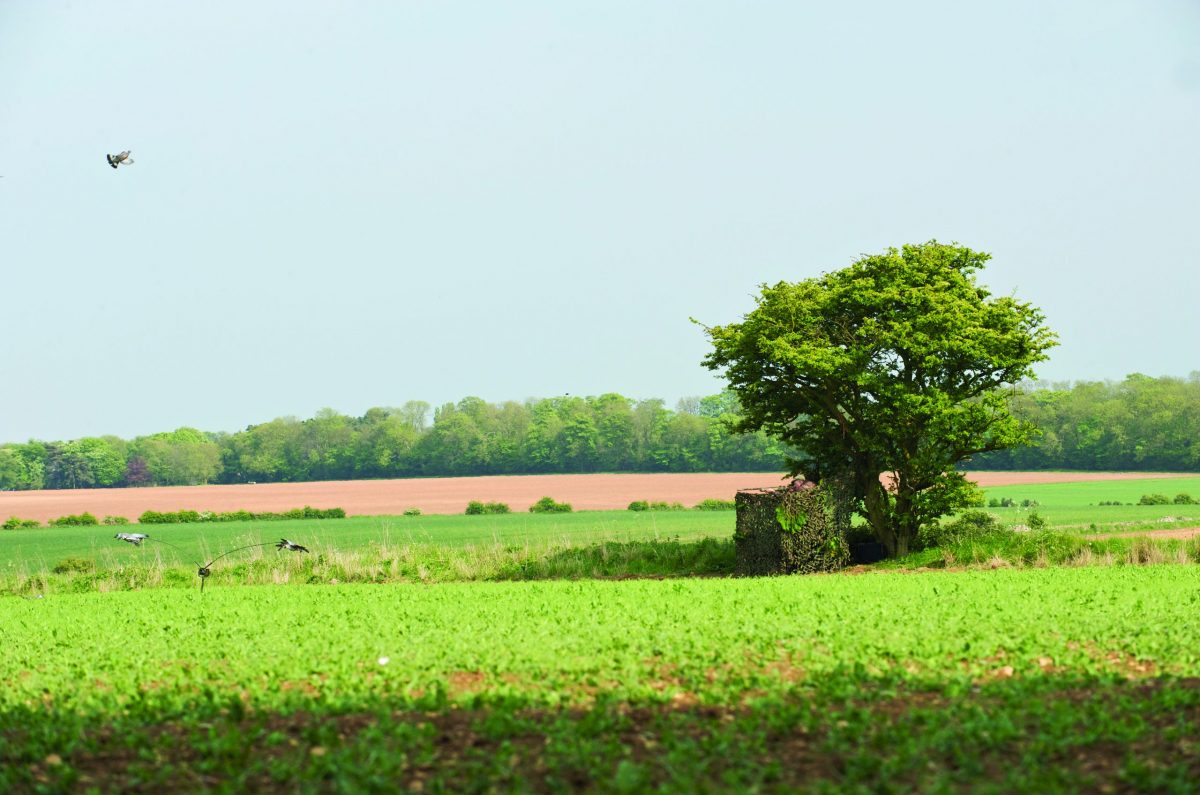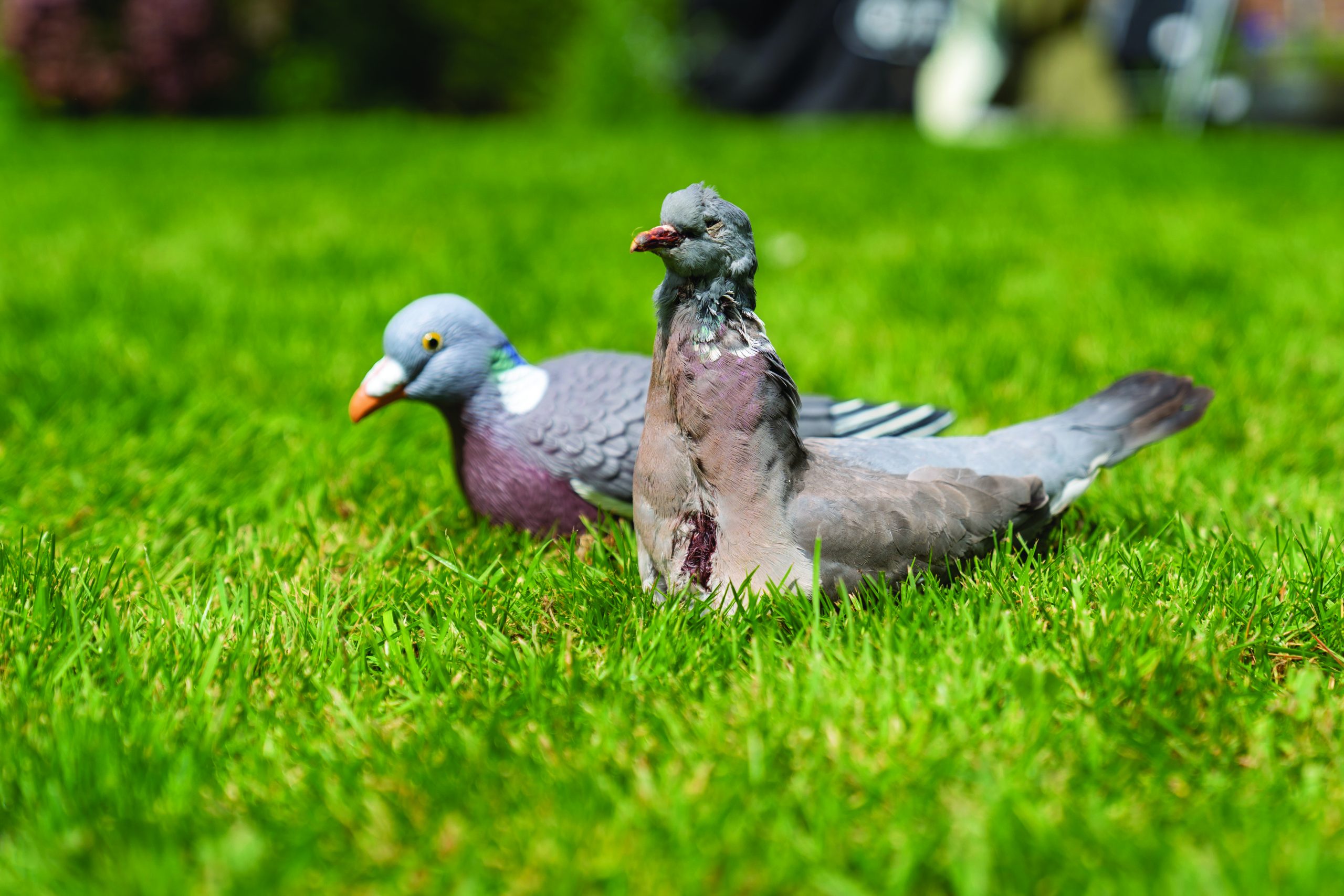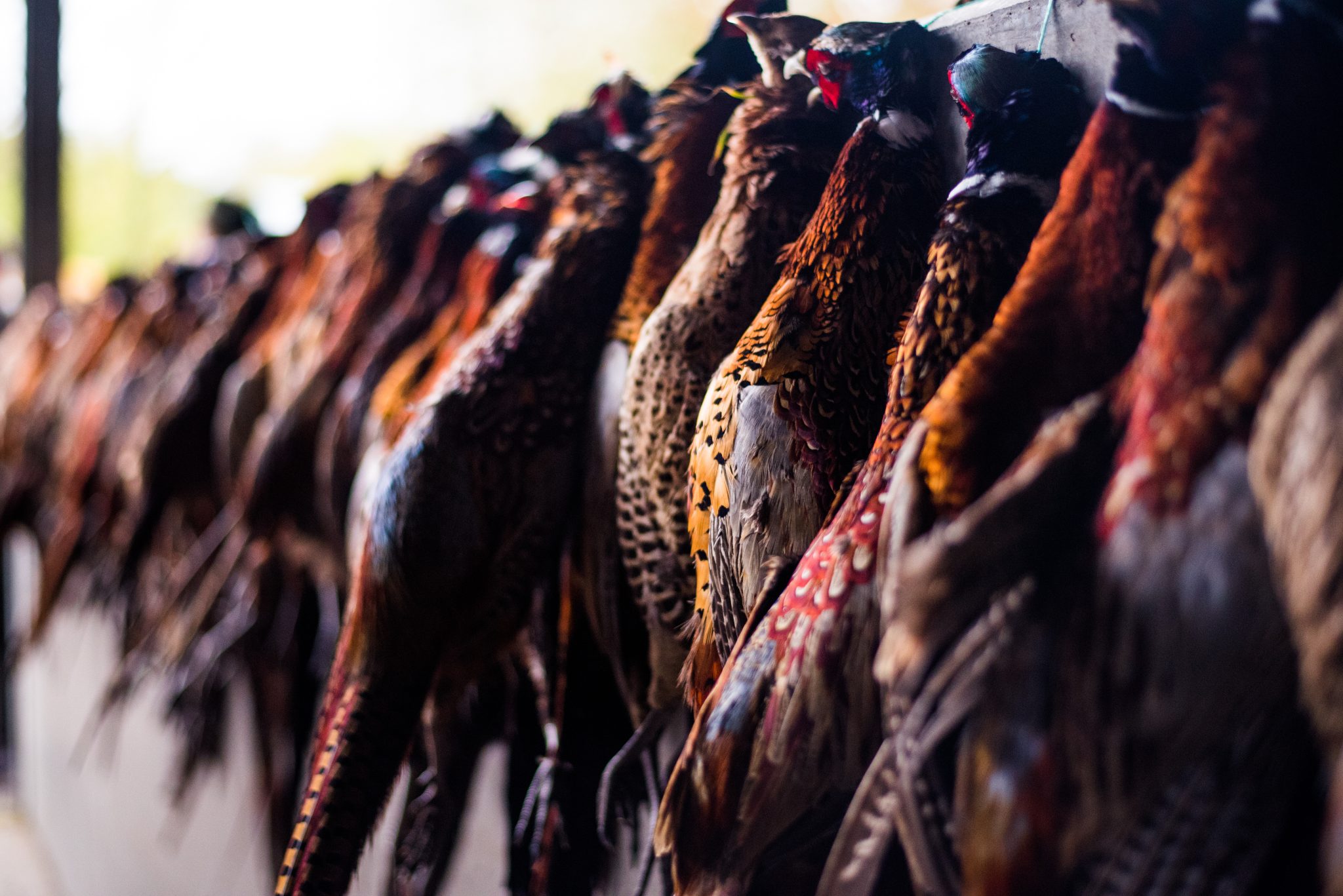Win CENS ProFlex DX5 earplugs worth £1,149 – enter here
A guide to improving decoy patterns

We’ve all been there. Our days of reconnaissance have suggested a field will produce a bumper bag. We constructed the ‘perfect’ hide and the decoys are out, and we await what will be the first of many arrivals. What could go wrong?
Within minutes, the first pigeon appears on the flightline heading in our direction. Without a glance, it carries on past our set-up. When this happens, most decoyers leave the hide to check nothing is wrong with the pattern they set out, even though this is the last thing causing the problem.
At this point it is worth considering the reaction of flighting pigeons to your layout. If you are sure that the birds can see your pattern but are ignoring it, there are really only two reasons for this.
You might be lucky, and the pigeons are simply not ready to feed yet, in which case they will return in due course, but most likely you are set up in the wrong place.
You cannot rely on your previous reconnaissance to put you in the right spot; you must always confirm what the pigeons are doing on the day that you choose to shoot in order to make the bag.
Decoy patterns – prioritise what you see on the day
Time and time again when shooting with Paul we have described what we have seen on our reconnaissance trips, only for a different scenario to unfold on the day we shoot. By all means use previous information, but trust what your eyes are telling you on the day.
We are often heard to say to each other: “They’ve never done that before.” But they were that day. If pigeons ignore your set-up and land in a different part of the field, you can be sure that you are in the wrong place and no amount of fiddling with the pattern will alter that. Do not sit it out in the (mistaken) belief that things will change as the day goes on. They won’t and, frustrating as it may be, you will just have to move.
If pigeons approach your layout with confidence but drift wide without committing fully, it indicates that the population has been chased too hard, and though they continue to use the field they are understandably wary of artificial set-ups.
We decoyers cannot replicate pigeons feeding and it is always interesting to watch the most decoy shy woodies respond to live birds on the ground, committing without a care in the world.
As an aside, it is a pet theory of mine that live birds give off some kind of ultraviolet glow that fades once they are killed. That is why freshly shot pigeons seem to work better than ones that you got out of the freezer, and explains why new arrivals are always attracted to the pigeon that just towered in the middle of the field.
To prevent pigeons becoming decoy shy, we therefore try not to shoot the same population more than once a fortnight, though this is not always practical from a farmer’s point of view.

Fake friend: decoy and bird
What is the common reaction to decoys?
Now we come to the most common reaction of birds veering off violently as they get near to your set-up. The obvious reason for this is that they have seen you, or rather they have seen you move. Why decoyers cannot sit still in a hide baffles me, but you see it time and again on YouTube clips. Having built a hide big enough to hide a tank, you see them bobbing up and down to peer over the side. All this is easily cured by making a hide through which you can see birds approaching and sitting still till they commit to landing, at which point they will not spot you rising slowly to shoot.
Again, in nearly every video I watch, there is an almost obsessive need to pick up every bird as it is shot “because pigeons are so clever they will not decoy if they spot as much as one of their brethren on its back”. When Paul shot his record bag of 440 pigeons he did not leave his hide once, and it made not the slightest difference.
These days there cannot be a decoyer who does not employ a spinning machine or two, and these are often the culprit.
Not, as some pundits insist, that they have become routinely wary of them, though, obviously, if they are subjected to them day after day they will eventually become suspicious of them. But I think that would be the case whatever type of artificials you use.
No, the reason is often that the machine is placed in the wrong place with regard to the pattern. We learned very quickly that incoming pigeons would not pass over the rotary to get to the decoys, so it needs to be situated as far upwind of the pattern as to be almost out of range in a crosswind. However, with the wind on our backs, the machine is often only 10 yards in front of the hide.
We do not profess to get things right every time we go out; it would not be as challenging if we did. But we always try to diagnose what is going wrong if the pigeons are not ‘co-operating’.
I can say that in 50 or so years of pitting my wits against woodies, changing the shape of the pattern has never been the answer to that diagnosis.
More tips on pigeon shooting
Related Articles
Get the latest news delivered direct to your door
Subscribe to Shooting Times & Country
Discover the ultimate companion for field sports enthusiasts with Shooting Times & Country Magazine, the UK’s leading weekly publication that has been at the forefront of shooting culture since 1882. Subscribers gain access to expert tips, comprehensive gear reviews, seasonal advice and a vibrant community of like-minded shooters.
Save on shop price when you subscribe with weekly issues featuring in-depth articles on gundog training, exclusive member offers and access to the digital back issue library. A Shooting Times & Country subscription is more than a magazine, don’t just read about the countryside; immerse yourself in its most authoritative and engaging publication.







